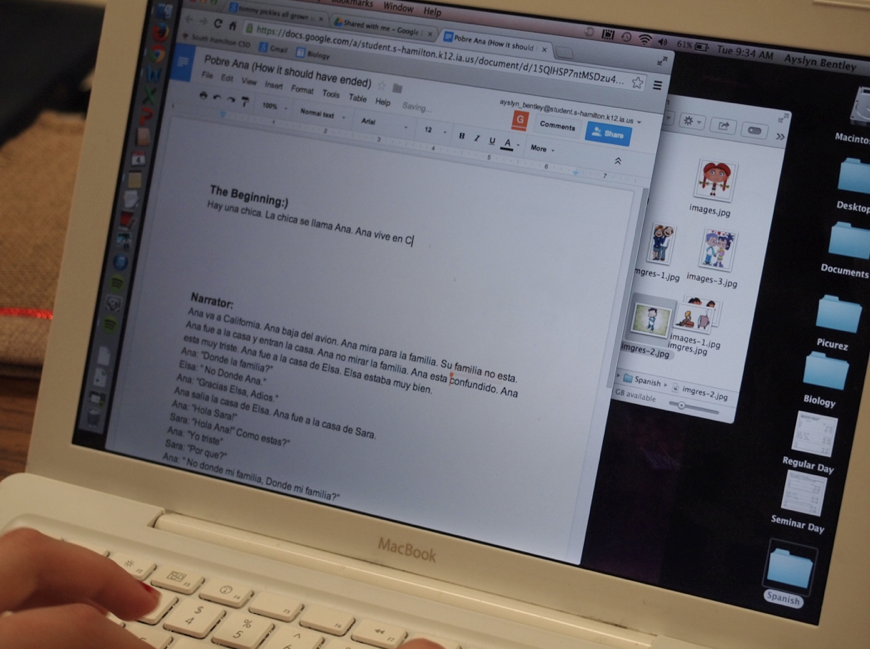For every formal summative assessment, I have the student reflect on their learning, what works best and what doesn't. The last test inquired about what they thought was most productive for their learning and why. It was an interesting observation that an overwhelming number of students commented in someway the acting was their most effective learning tool with the readings. After some additional self-reflection it occurred to me that it wasn't just the acting per se, but rather that they could visualize.
Visualize. Yes, visualization rather than dramatization is what I needed to hear. Maybe it's my theater background that made me want to have props, a stage, audience, for a full-blown dramatization. What they really need is a way to see what is happening in the story, no matter how lame or goofy it may turn out. Putting a warm body in the place of a mental image and/or creating a (new) mental image for the learner is what it's all about.
 |
| Vero (mamá de Ana), Anita (Pobre Ana), Antonio (papá de Ana) |
| Alejandra (mamá de Ana), Adalicia (Pobre Ana), Jacovo (papá de Ana) |
So, visualizing "Ella es una chica." vs "Él es un chico." becomes more real for the students. I can then take it to the next level, asking students about the chico or the chica. ¿Es alto or bajo? ¿Es grande o pequeña? ¿Es de Iowa o California?
It's a simple word, but one that made all the difference for me and reinforced that the images are so important to beginning students.











